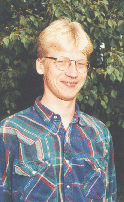

|
SSP 1995 project summary: |
|
|
|
This research is to serve as part of a three year project supported by the EPSRC. The aim of the project is to compare discrete particle and continuum computational models for the behaviour of particulate solids in silos. To ensure that the findings have wide acceptance, it is being undertaken as a major international collaboration effort, with many discrete element and continuum (finite element) modellers around the world attempting a series of standard problems. Thus, many different formulations of each model type will be used, chiefly because there is little agreement between research groups on which features are necessary to achieve a reasonable modelling.
Practical application of discrete element method (DEM) has been hampered with traditional sequential processing computers. Realistic discrete element simulations for particulate flows in silos require considerable amount of computer time. This is particularly true in three dimensional discrete element analysis that can use up enormous amounts of computer time. Many researchers are devoting to achieving a more efficient discrete element computation. Significant speed-up is possible by exploiting the inherent parallelism in the time integration of the discrete element models and the use of parallel computers.
The practical objective of the scholarship is to port one of these DEM modelling programs from Fortran 77 to a suitable 'parallelised' version (e.g. HPF) (3-5 weeks). From here it would be used to calculate results for the various standard examples being used as part of the international project.(3-5 weeks). A final (optional) step would be the porting of the second program to a similar 'parallelised' version and generating results for the standard models using this second system.
The modified discrete element simulation code will allow a major step forward to the more realistic simulations of particulate solids in silos. It will also allow this university to be at the leading edge of the research field and make significant contribution to the particulate flows and silo structure research.
 Thomas
Schroder worked on this project.
Thomas
Schroder worked on this project.
Compressed PostScript of the project's final report is available here (138633 bytes) .
 Webpage maintained by
mario@epcc.ed.ac.uk
Webpage maintained by
mario@epcc.ed.ac.uk
|